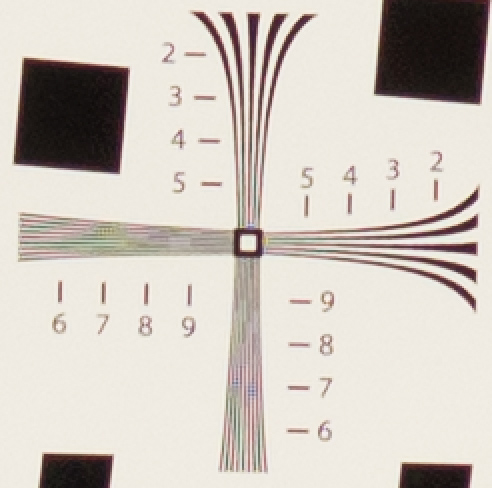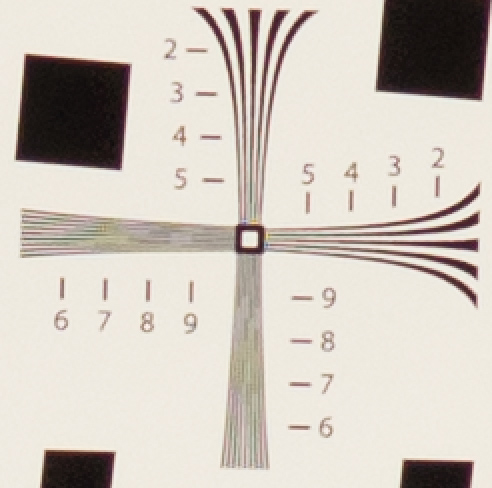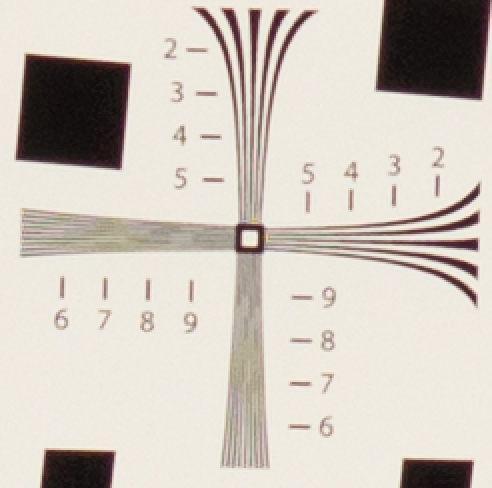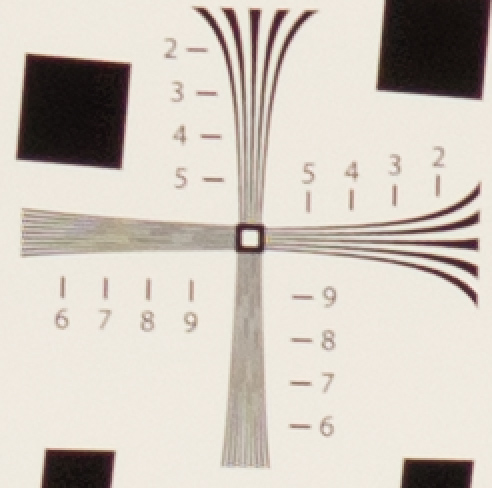Early on in my testing of the Sony a7R, I ventured the opinion that the camera probably wouldn’t exhibit image degradation from shutter slap with lenses of 135mm or shorter focal length with the camera in landscape orientation with the camera mounted directly to a tripod head (no lens collar). Then I found image degradation with the 55mm f/1.8 FE lens, and that shook my confidence. I found surprisingly high vibration frequencies with the Zeiss 100mm f/2 Makro-Planar ZF, and that further eroded my faith. In the last few posts, I pretty much pinned down the Makro-Planar vibration amplitude as being about three pixels peak-to-peak, and about three pixels of linear blur at 1/80 second.
All that caused me to try to test how far off I was in my original judgment. I mounted a Leica 135mm f/3.4 APO-Telyt on the A7R with a Novoflex adapter. I bolted a generic RRS plate to the bottom of the camera and mounted it on a RRS BH-55 that was attached to a set of RRS TVC-44 legs. These are heftier legs than I’d been using; I wanted to give the camera every advantage. I placed the tripod on concrete pavers and aimed it at the ISO 12233 target. I positioned the target approximately 93 million miles from a thermonuclear D50 illuminant.
I mounted a Heliopan variable ND filter on the lens. I set the camera ISO to 100. I opened the lens all the way, focused, and stopped down to f/5.6. I set the camera to “A” exposure mode, and adjusted the exposure compensation dial until the shutter speed read 1/2000. I hadn’t gone any higher than 1/500 in the previous testing, and it had looked like there might have been some motion at that shutter speed, since images made at 1/400 were more blurred. You don’t really know you’ve got as fast a shutter speed as you need to deal with the motion blur until at least you top two shutter speeds have the same amount of blur.
I made the first exposure, adjusted the filter so the shutter speed slowed by a third of a stop, made another exposure, and kept on until I got to 1/15 second.
In Lightroom, I set the white balance of all the images to daylight, added two stops of exposure boost, and exported all the images as layers to Photoshop. There I labeled the layers with the appropriate shutter speeds, cropped to the target, and took a look, concentrating on the cross in the upper right hand corner that’s become so familiar to my regular readers.
Here’s what I found, res’d up 2x using nearest neighbor:
The images from 1/2000 to 1/500 were very similar. There were some small differences in resolution, most of which could be attributed to small shifts of the target in the frame, but not entirely so. Here’s what is possibly the sharpest image, made at 1/1600 second:
1/400 and 1/320 were almost as good as 1/500. The first frame which suffered degradation that might possibly be noticed in normal photography was made at 1/250 second, and has most of the visible loss in the vertical lines, indicating that the movement that caused the degradation was horizontal:
1/200 is noticeably worse in both directions. This amount of blurring would be noticeable under the right circumstances in normal photographs:
1/160 is better for the horizontal lines and about the same for the vertical ones, 1/125 is worse, and 1/100 is about as bad as it gets:
1/80 is about the same as 1/100, and then things stay about the same until 1/25, when there’s a little improvement. At 1/15, it looks like this:
I think I have to eat my words. There is certainly degradation from 1/250 through 1/15 that could be noticeable in real photographs. Whether or not it is important to those images is up to the photographer.





Thanks for all these tests and sticking with it.
This certainly makes it seem like the effective resolution of the A7R suffers in so many circumstances that it doesn’t seem worth the price difference to an A7.